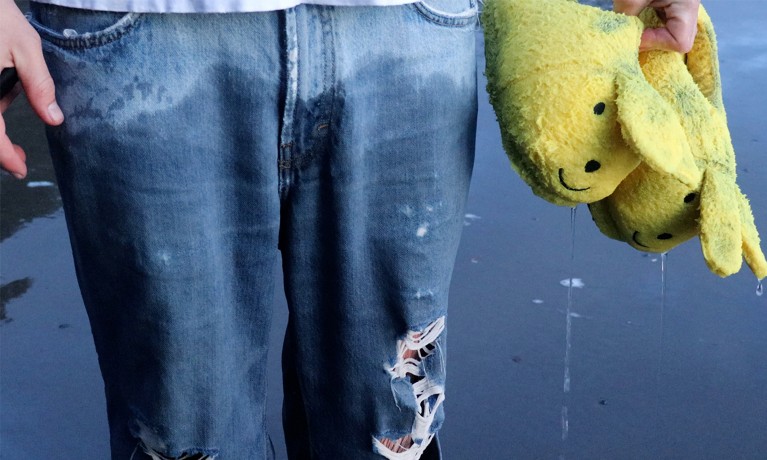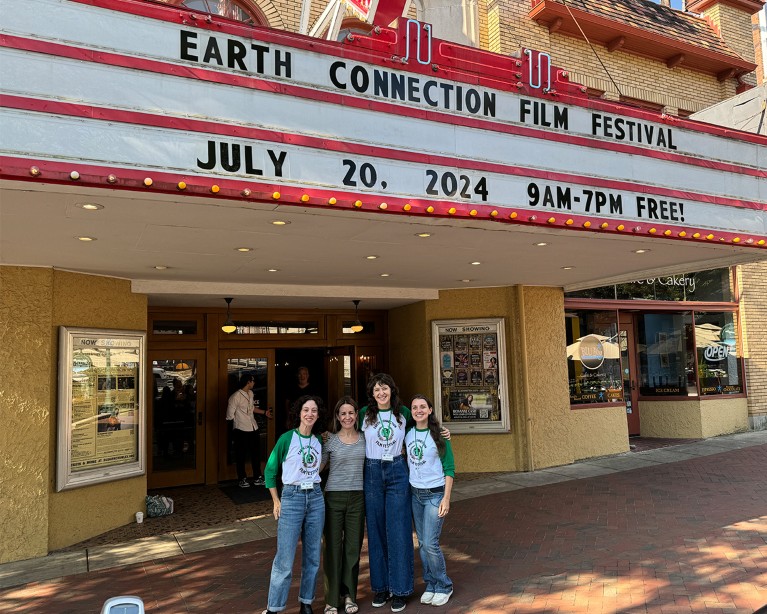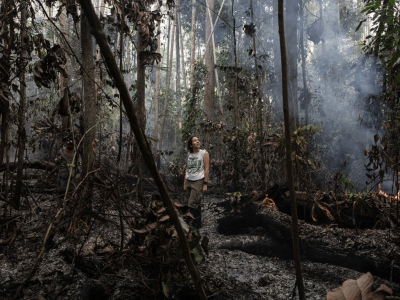On a late July afternoon in Bloomington, Indiana, I stood on stage in a darkened theatre, looking over a sea of unknown faces. As a researcher focused on environmental challenges — normally, I study how communities respond to climate change — I was amazed to find myself introducing an international film festival.
I wound up on stage as part of
a US National Science Foundation grant that I was awarded
in January. The grant funds three studies, and each includes a public-engagement component. For one of the studies, I wanted to explore how multimedia stories can influence climate action, and I needed to collect films to show to the test groups. So I worked with film-maker and lecturer Sarah Lasley at California State Polytechnic University, Humboldt (Cal Poly Humboldt) in Arcata to run a film festival, with specific categories tailored to the messages we needed for the study.
Starting next year, test groups will watch the winning videos, and we will measure whether certain themes shift adults’ understanding of climate change. Many adults think of climate change as a faraway impact instead of, for instance, viewing it through the lens of their own spiritual or ethical values. A more moral perspective — such as honouring a personal sense of connection to, responsibility for or interdependence with other forms of life, both human and otherwise — has been demonstrated to promote stronger pro-environmental attitudes and intentions
1
.
This drove us to create the
Earth Connection Film Festival
. We asked film-makers to submit their works for a variety of cash prizes. The festival was held on 20 July in Bloomington, and online from 20–27 July. We received more than 200 submissions and ultimately accepted and screened 24 of them publicly. These films, from all around the world, played over 4 hours. Viewing 200 movie submissions was inspiring, surprising and an exercise in endurance. The films focused on the messages we are going to test in our research: hope, responsibility and interdependence.
Festival winners
Winners included
The Big Steppe
, a documentary directed by Sean Lovell, a film-maker in Sheffield, UK, which features Mongolian herders showing their interdependence with Earth and its climate. Another documentary,
Fire Beneath Her
by film-maker Denise Dragiewicz in Hoboken, New Jersey, follows a young Indonesian woman trying to improve air quality in her country and preserve one of its forests. The festival’s spirit award, which honoured original, outside-the-box films, went to two undergraduate students at Cal Poly Humboldt, Hunter Circe and Sean Stippick, for
Troglodyte
, a film that captures climate anxiety and its dark spiral of paralysis, and how to break out of its grasp.

A still from
Troglodyte
, which won an award at the festival. The film follows a man who breaks free from climate anxiety, becoming captivated by the beauty of the world.
Credit: Hunter Circe and Sean Stippick
Other winners included
Once Upon a Forest
by Mattias Olsson, a film-maker in Stockholm, which focuses on an artist in Sweden who started living in a forest when she experienced depression as a young woman, and is still there 25 years later. Now, as the forest falls prey to a climate-related crisis, she decides to heal what once healed her.
We Are
the
Earth
by French film-maker Zoé Rose is an animation accompanying a poem that encourages people facing climate despair to break free from their sense of depression and helplessness. And in
Decoding Ancestral Knowledge
, Kiana Frank, a microbiologist at the Kewalo Marine Laboratory in Honolulu, Hawaii, and a Native Hawaiian, shows us how ancient knowledge and modern science can be combined to provide powerful insights into nature in the face of environmental pressures.
The films were moving, powerful and diverse, showcasing how minds around the world are tackling, both artistically and philosophically, the existential threat of climate change.
Public outreach
The festival was free and was attended by
members of the public
, researchers, students and a National Science Foundation representative. The films were also available to view online, with an accompanying
guide
containing synopses and the supporting research. It attracted
media attention
and was the kind of impactful, public-interest scholarship that I often dream of being a part of. Artists, scientists and the public converged, and the award-winning films will be used to support ongoing research.
‘Who will protect us from seeing the world’s largest rainforest burn?’ The mental exhaustion faced by climate scientists
I started doing this type of work during my PhD programme as my team built the public-outreach website
Clima y Café
(meaning Climate and Coffee) to help Colombian coffee farmers to adapt to climate change. Since then, I’ve developed
photo exhibits, created websites and written books
.
Top tips
Here’s my advice for others who are interested in creating a film festival as part of their research, or in shaping their research into public service.

From left to right: festival director Sarah Lasley, winning film-maker Denise Dragiewicz, festival director Jessica Eise and festival coordinator Amanda Camarillo stand outside the theatre where the screening was held.
Credit: Shelley Foley
Using the simplest terms possible, establish a basic problem and solution.
In our case, this was: “Let’s help to solve climate change, to prevent people from dying.” Our solution? Find out what motivates people, so we can aim to change human behaviour. This basic premise guided everything, shaping our desire to support film-makers in creating climate-change films and to raise public awareness of the issue.
It is impossible to draw together people from different backgrounds, formations and swathes of society without this type of clarity.
Don’t expect people to work for free.
Not only is this disrespectful and ungenerous, but it underscores a fundamental disconnection from the way the world works. Science and research are privileged vocations that come with power and prestige — which should not be leveraged to short-change others.
Compensate everyone for their skills in a fair way.
I am not a film-maker. I could not have directed the festival without Lasley, and I paid her
from my NSF grant
. When I didn’t know how to proceed while planning the festival, I consulted her. The reason we had more than 200 submissions is because we were awarding generous screening fees and cash prizes to the winners.
Paying people fairly will come at the expense of other things, such as a large travel budget, but that’s the way it goes. If you want something to work, you have to show you value other people’s time, skills and knowledge in a form that transcends all occupational boundaries: money.
Be audacious.
It is easy to think that there are invisible rules about what constitutes the kinds of work you can or should be doing. There is always going to be a curmudgeon in your departmental meeting who is going to make a snarky comment about your work. The world is facing pressing societal challenges that need solutions now. It’s okay to try something new and different, or big and bold.
At first, it seemed too much to hope that I could host an international film festival sponsored by the premier US science institute, the National Science Foundation. But if I’d never imagined it and had the audacity to write it down, then it wouldn’t have happened. What could be happening in your life, if you did the same?



